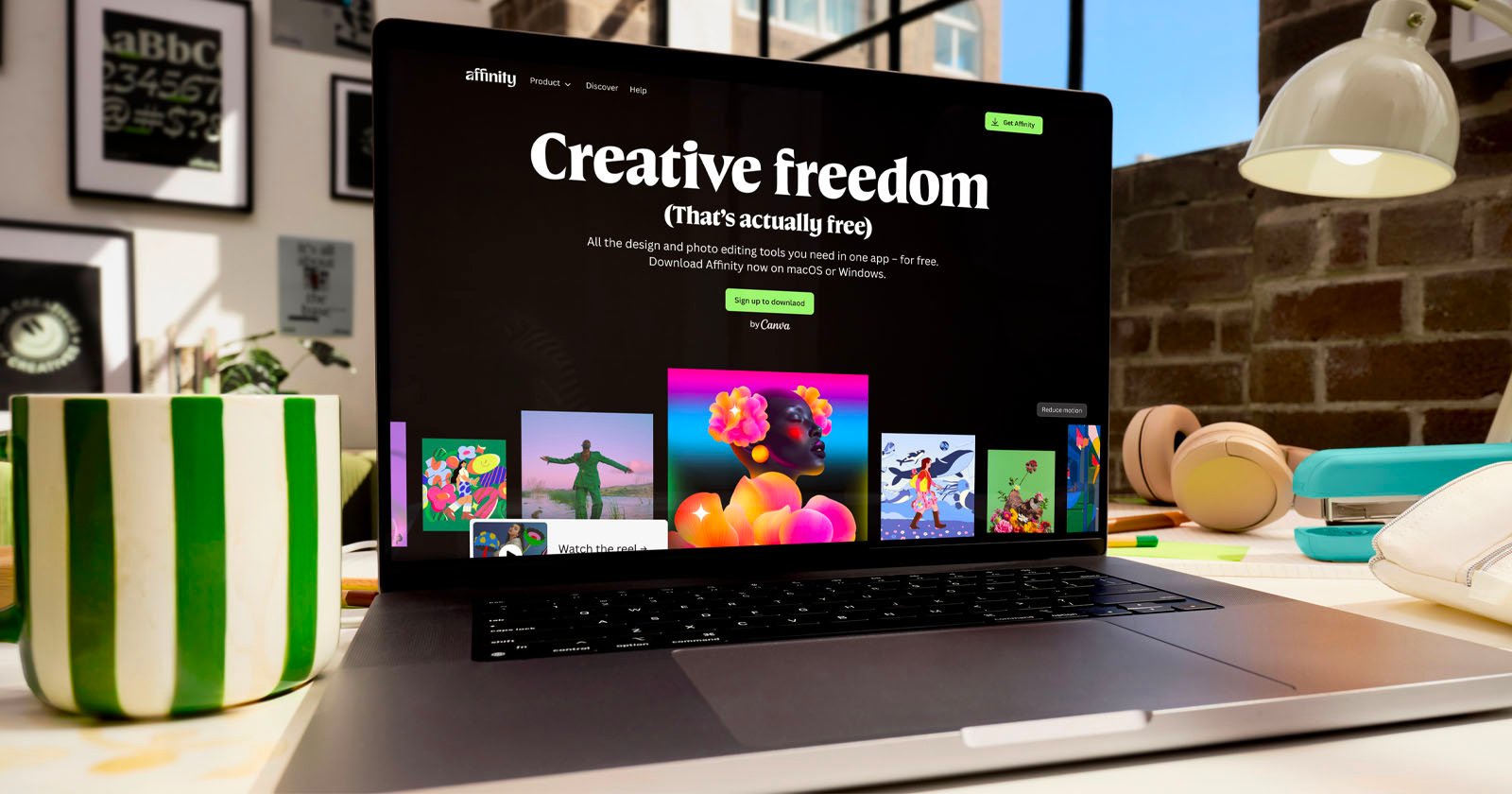Copyright PetaPixel

Today Affinity announced that it was going free to use for everyone, a move that probably surprised a lot of you because it was certainly unexpected to me. However, the more I think about it, the more it makes perfect sense. Affinity was never going to beat Adobe in a paid capacity, but there is one company that has already proven it can topple the giant by offering an alternative for free: DaVinci Resolve. Since it went free to use, Blackmagic has slowly eaten away at Premiere Pro’s market share among creative professionals and over the last few years has become the de facto editing platform for just about everyone, largely because it’s great, but also because it’s free. Resolve didn’t start out as free. Similar to the situation at Affinity, when Blackmagic purchased it in 2010, it kept a one-time purchase pricing model that it inherited. For a year, Resolve cost almost $1,000 for a license, but by 2011, Blackmagic realized that was a barrier to entry that most users were never going to jump to. In June 2011, Blackmagic introduced a Lite version that was free. It held back features to a paid tier, but the base software was there. Over the next decade, Blackmagic continued to make the value proposition of Resolve, especially the free version, stronger. Today, DaVinci Resolve gives editors access to almost everything they would need at no cost. There is still a paid tier, but it only unlocks support for resolutions beyond 4K, exported frame rates up to 120 frames per second, 10-bit video processing, multiple GPU acceleration, stereoscopic 3D, HDR grading, collaboration tools, and additional plug-ins and AI-driven features. Most content creators don’t need any of those things, and so most DaVinci Resolve users do not pay for the Studio upgrade. Now, DaVinci Resolve is so good and so popular, it has become impossible for its competitors to ignore. While Blackmagic doesn’t publish user numbers, third-party platforms report that Resolve has exploded in popularity, growing from just 900 users in 2009 to over 5.47 million in 2023. Anecdotally, PetaPixel has noted a huge swing in users migrating from Adobe Premiere Pro, and most creators are either using Final Cut Pro or Resolve now. While Premiere Pro didn’t help itself with widespread reports of regular crashing around five years ago (which has largely been addressed and is no longer an issue), the main issue can be tied to cost: Premiere Pro is expensive. Adobe charges $23 a month to access the app by itself and $70 a month to get it bundled with the full 20+ app suite. As mentioned, Resolve is free, and even if a user wanted to buy Studio, that’s just $325 — that’s the price of just over a year of “renting” the software from Adobe, but Resolve licenses are perpetual. That’s what makes Canva’s approach with Affinity so smart. The strategy here is basically the same: offer the base software with a majority of features to anyone who wants it for nothing, and then if specific AI-powered features are desired, those can be added on with Canva at $15 per month. The fact that Canva doesn’t offer perpetual licenses is really the only difference in strategy — and it remains to be seen if that’s going to be a major blocker to Affinity’s widespread success — but the rest is already proven to work. Adobe Photoshop has been, to this point, impossible to topple. The high-end, deeply entrenched professional tool has had the luxury of no real competition for decades. Affinity was always an alternative, but it never felt like it could really compete. Going free is going to be hugely helpful in convincing users to try it. Affinity needs users in order to drive value, and users are going to be far easier to get when points of friction are removed. The blueprint is already there, thanks to Blackmagic DaVinci Resolve — Canva just needed to copy it, and it did. Added value here is that Affinity isn’t just competing with Photoshop; it’s competing with Illustrator, InDesign, and more. The free app has seven distinct software tools that can be accessed at any time, on any document, seamlessly, all for free. In order to really steal market share away like Resolve did, Affinity is going to require more than being free, though. The other half of Blackmagic’s success has come in the form of regular, substantial improvements to the platform. Every year, DaVinci Resolve sees huge, hundreds-of-features-long improvements that make the app faster, better, and more value-rich. Affinity is going to have to deliver the same for free users to see the huge success Resolve has seen. Given that Canva is a hulking behemoth of a business with millions of users and billions of dollars in annual revenue, there is certainly every reason to believe this kind of support is possible. What Affinity needs to invest in for photographers right away is a robust RAW editing platform and huge profile support. Adobe has regularly been the king of this and continues to support photographers faster than any other platform. Even Apple is comically slow at adding RAW support (it took the company almost a decade to add the OM System E-M1 Mark II camera to its RAW support list and over a year to add popular Sony cameras). Affinity can’t rely on Apple, Microsoft, or anyone else to support RAWs. The company needs to invest in relationships with camera brands and make swift additions of new cameras and lenses with regularity. But one thing is clear: everything is in place for Affinity to finally succeed and pose a real threat to the status quo.



